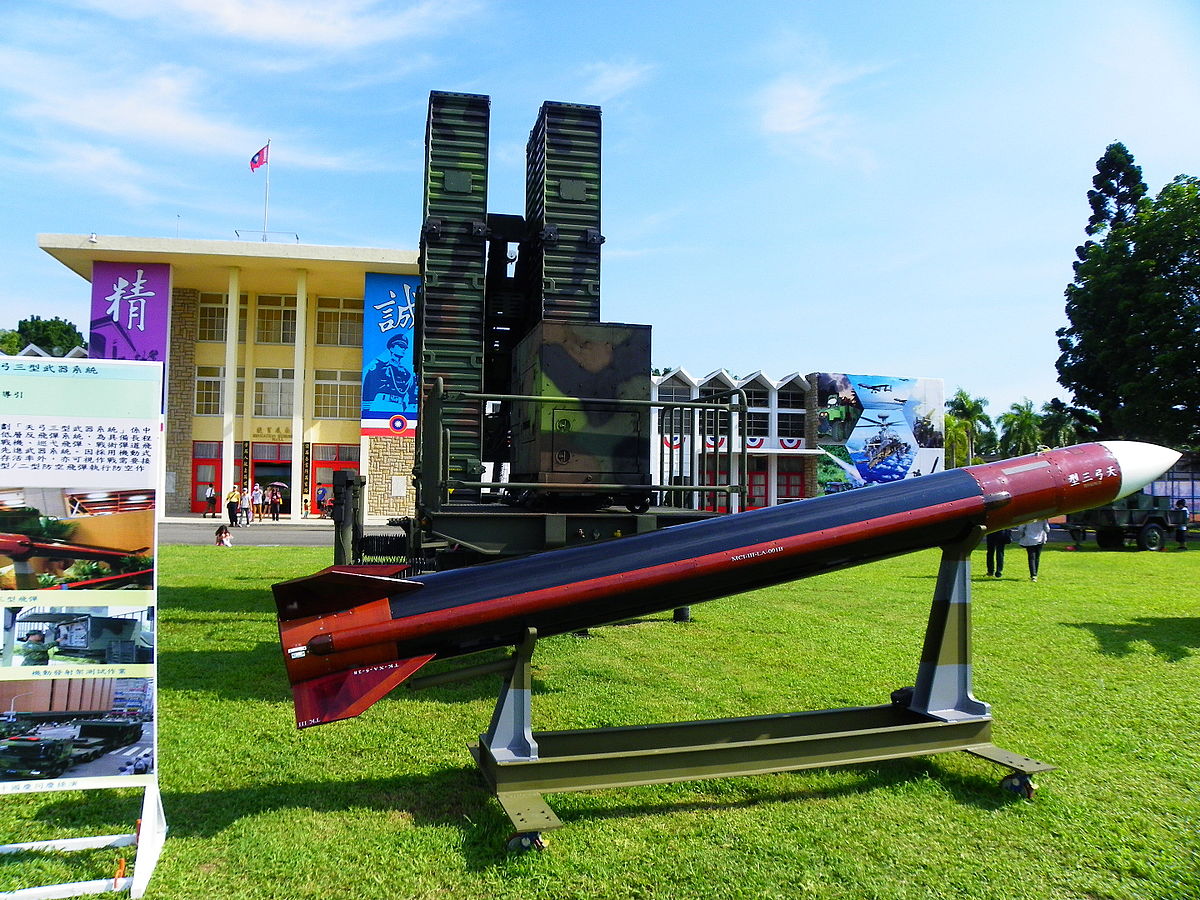The Taiwanese military has deployed Skybow III and Patriot missiles to the northern part of the island to strengthen its air defense.
The move assumes significance as it comes close on the heels of the Republic of China (RoC) Air Force retiring its last two HAWK surface-to-air missile batteries last year and the head of the United States Air Force’s (USAF) Air Mobility Command General Mike Minihan warning about a war with China over Taiwan by 2025.
Reports said the Taiwan military has been relying on the Skybow III and the Patriot missiles after the phasing of the HAWK, indicating the two systems are the mainstay of Taiwan’s air defense.
Taiwanese military officials have been quoted saying the platforms are mobile and dispersed, not concentrated in a single place.
Aimed To Confuse China?
This is meant to complicate China’s People’s Liberation Army Air Force (PLAAF) tracking Taiwanese military locations and destroying them in one strike.
The missile numbers Taiwan has in its inventory are unclear, but it would be safe to assume that they would not be enough to keep Chinese warplanes at bay permanently, and their air denial threat to the PLAAF would not last long.
The Skybow (also called the Tien-Kung III) battalions in the north are responsible for “regional air defense operations,” where troops maintain combat readiness during peacetime.
But the “unit will move to a tactical position and jump into action” during the war, Taiwan News added. This means that the maneuver could be part of a training exercise meant to refine logistics processes, which might come in handy when air defense units must be constantly moved around the country to avoid detection.

EurAsian Times recently reported an exercise where the PLA moved around its HQ-22 SAM system from its base in Southern China to the northwestern and north-central regions in a Y-20 strategic transport aircraft.
The Taiwanese exercise would also be akin to Ukraine, which kept shifting its Buk and S-300 batteries between the east, south, and the cities. Ukraine, however, is larger than Taiwan and has some strategic depth to keep its war material in the Western part and keep the war going.
Taiwan is much smaller and has even meager military resources. How long it can keep its key military platforms hidden from the superior Chinese intelligence-surveillance-reconnaissance (ISR), capabilities remains to be seen.
Another possibility is that the report could very well be planted as a part of a deception to trick the PLA. But that, too, could cause a tactical loss of a few mainland Chinese military aircraft. This is no way it degrades the Chinese military, which can press far more men and equipment into the war, along with naval and ground forces, that the Skybow or the Patriot do not threaten.
“The Air Force Command said the movement of units is based on the threat of the enemy and the need for defensive operations that are carefully planned to ensure national security. It did not comment on specifics of troop deployment or missions,” the report added. This wording is vague and odd, and the likelihood of the Taiwanese wanting to lure some Chinese ISR drone to study its radar signature or check for a change in the pattern of its flights into the island’s Air Defence Identification Zone (ADIZ) cannot be ruled out.
China usually sends the J-16 fighters close to the northern part, going by the periodic information of its flights released by Taiwan’s Ministry of Defense (MoD).
Tien-Kung III & Patriot Missiles
The indigenously developed TK-III is a product of the National Chung-Shan Institute of Science and Technology (NCSIST) and was meant to replace the very HAWK SAM system. It entered service between 2010 to 2011.
It comprises surface-to-air missile, canister, and mobile fire control units, including phased array radar, communication relay, engagement control station, launcher, and power plant equipment.
It has an active radar guidance system combined with inertial midcourse guidance. A microwave seeker in the nose provides high-accuracy navigation information.
Meanwhile, the US offered to sell up to 100 of its PAC-3 Missile Segment Enhancement (MSE) variant and related equipment to Taiwan.
The proposal was made under the provisions of a 2010 sale and is worth around US$2.81 billion, according to a State Department notice reported by Bloomberg News.
The sale would include M903 Launcher modification kits, training missile rounds, and software upgrades to accommodate the new missiles. The advanced Patriot missiles will augment Taiwan’s existing stockpile “to improve its missile defense capability, defend its territorial integrity, and deter threats to regional stability,” the notice said.
- The author can be reached at satamp@gmail.com
- Follow EurAsian Times on Google News




